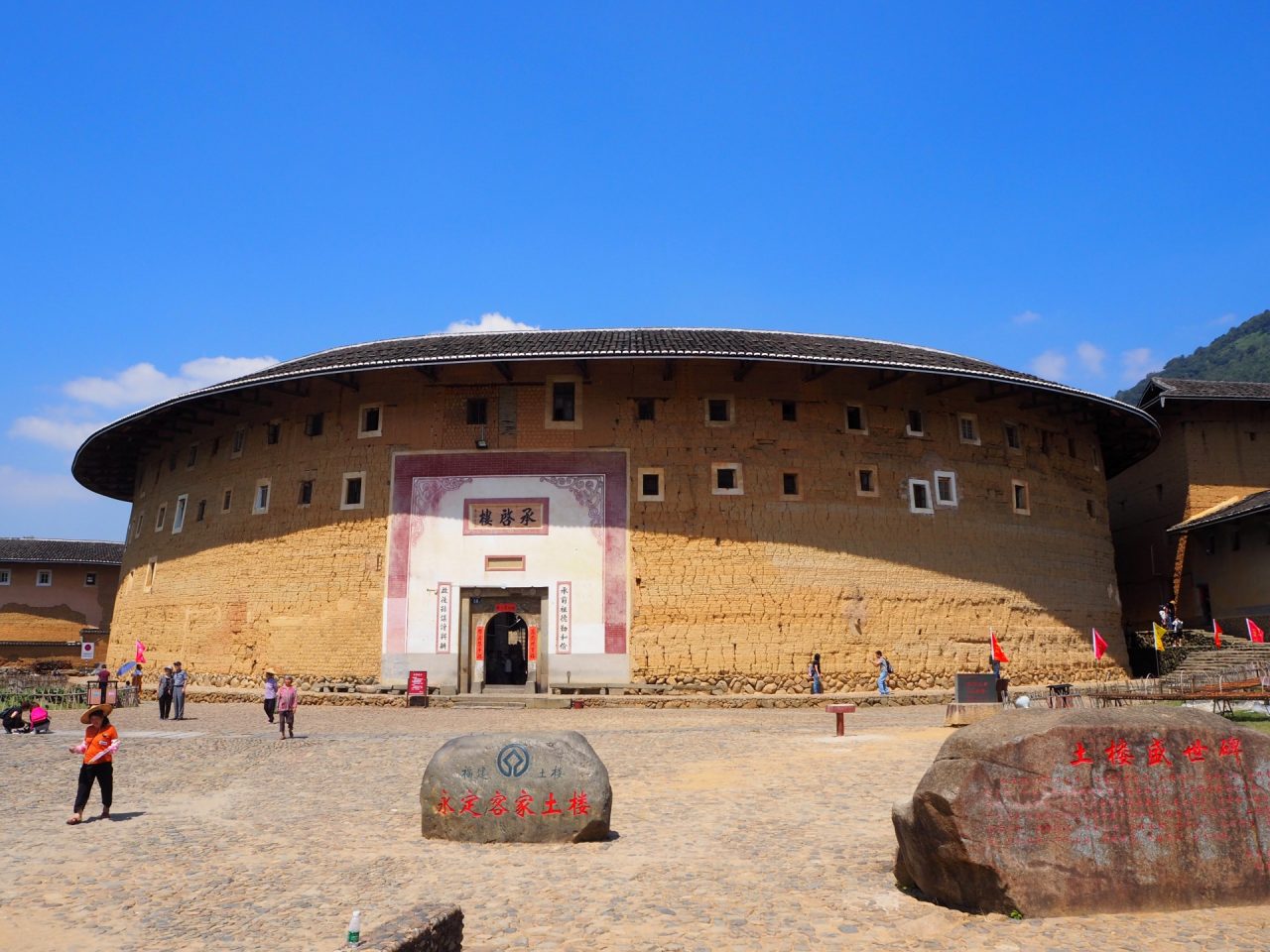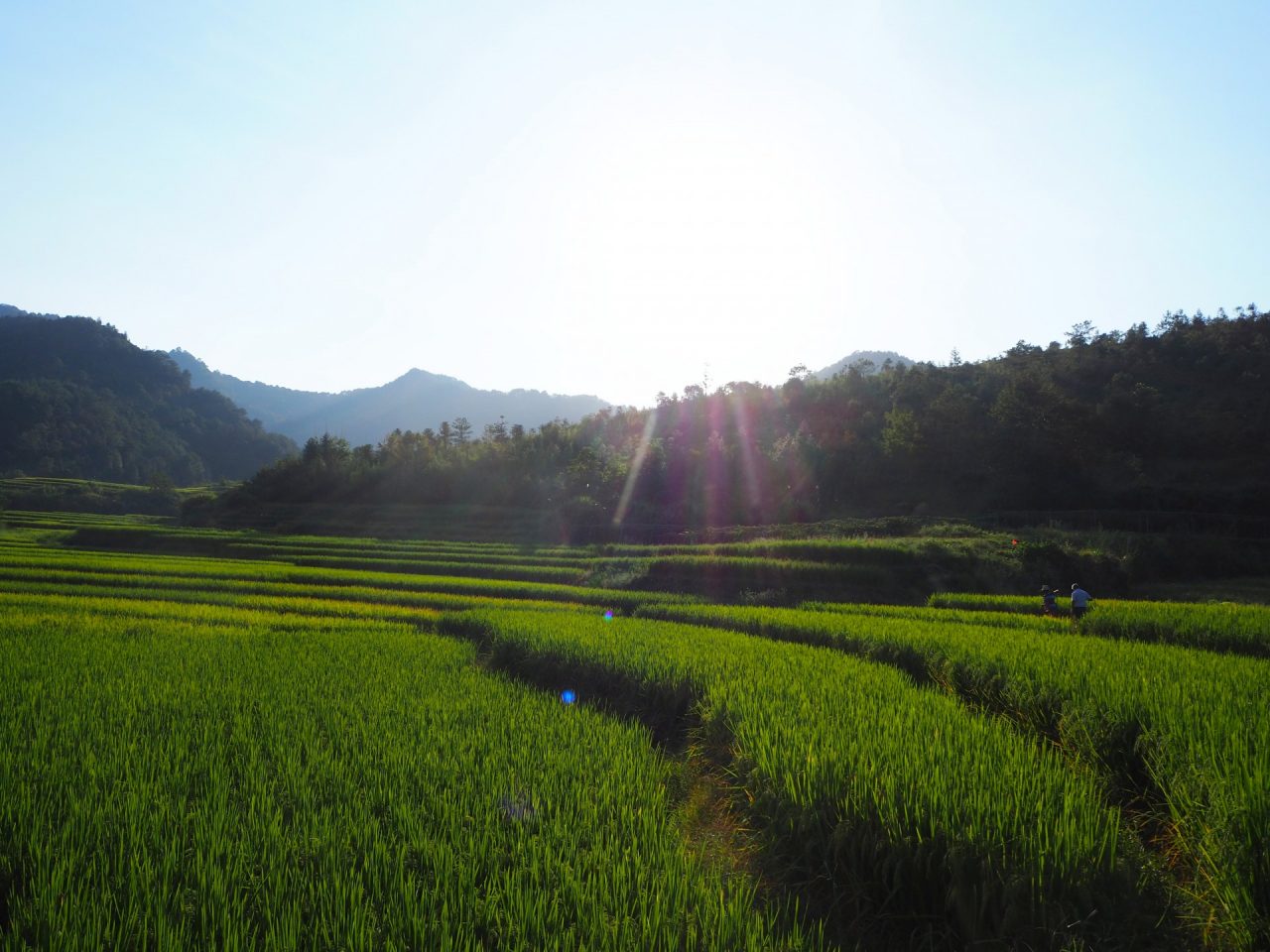Bear with me. This is going to take some brain power. Some real racking of the old memory, which is really not my strong point. Why? Well, I’ve left China now, but after living there for knocking on a year and a half, I realise I’ve barely accounted for six months. I’m a whole year behind. Slowly, I intend to remedy that…
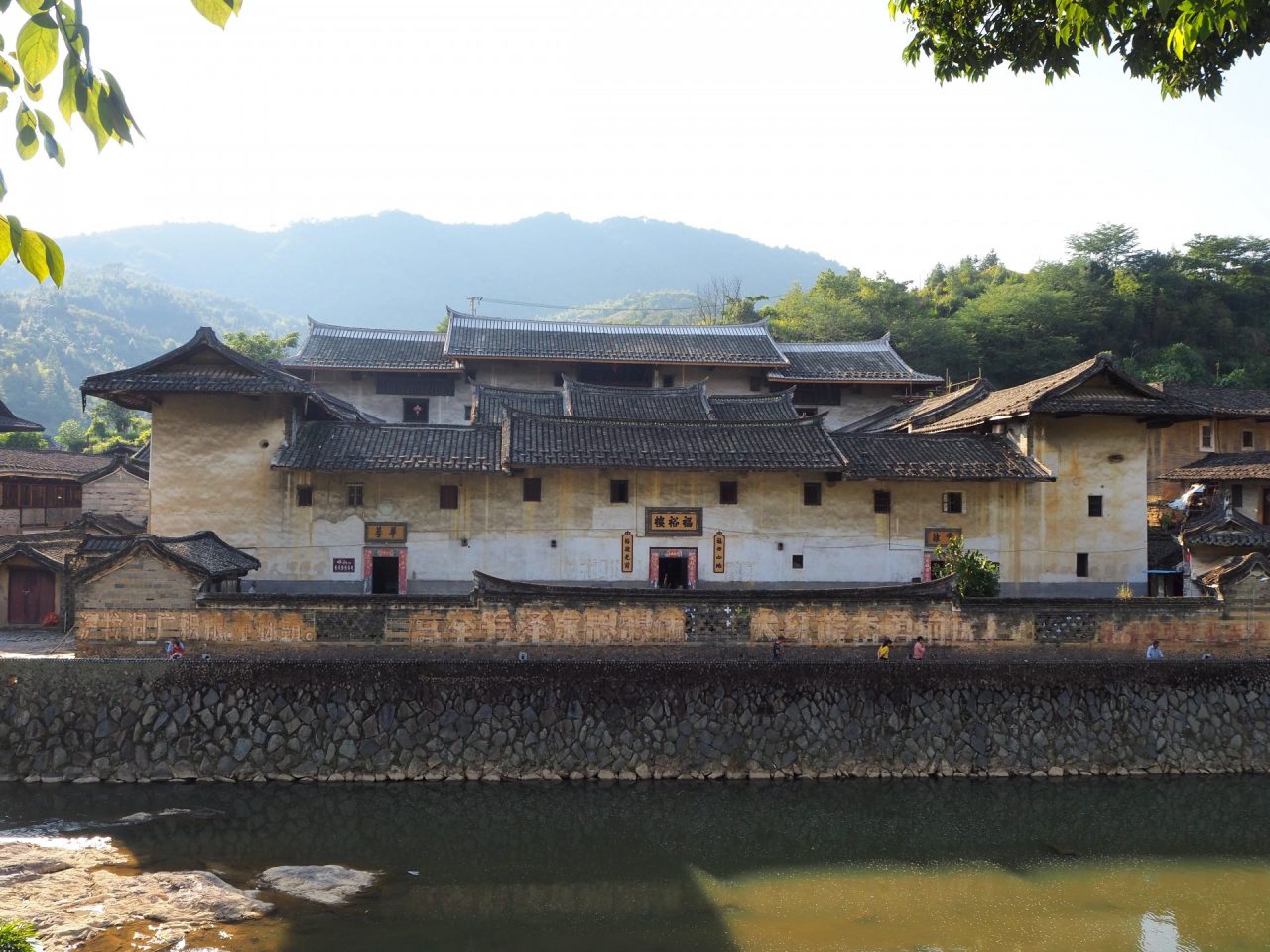
At the beginning of October, China celebrates National Day, the anniversary of the founding of the People’s Republic of China. The surrounding days are a national holiday, and thus commences one of the largest yearly migrations of people known on Earth.
The National Day holiday competes for the top spot with Spring Festival (Chinese New Year), where once again vast numbers cross the country to be with their families. There’s one small difference though. Whereas Spring Festival usually involves people going back to their home towns, National Day is often regarded as an opportunity to go on holiday with one’s relatives. And why not? It’s what I’d do (minus the relatives, of course).
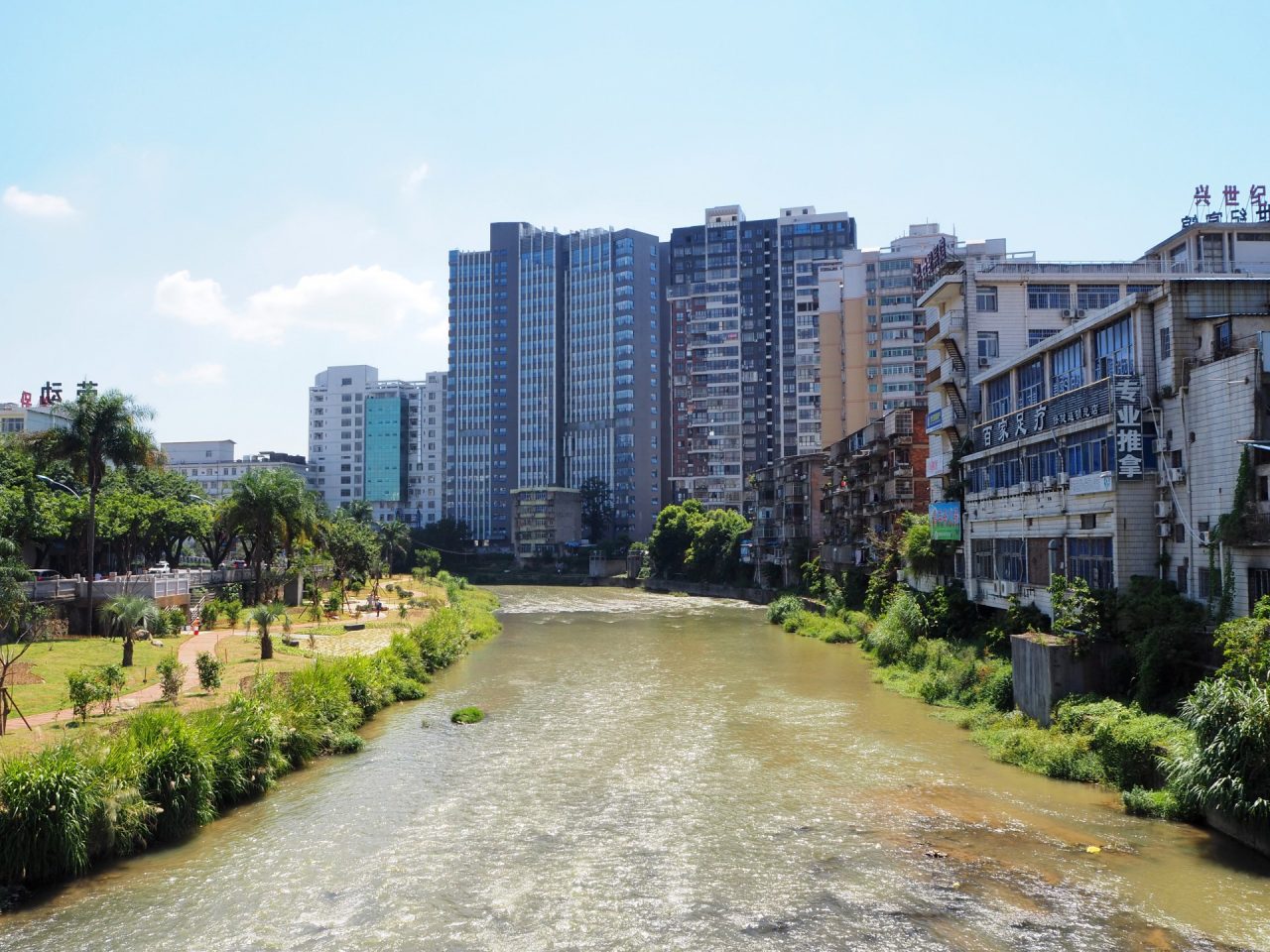
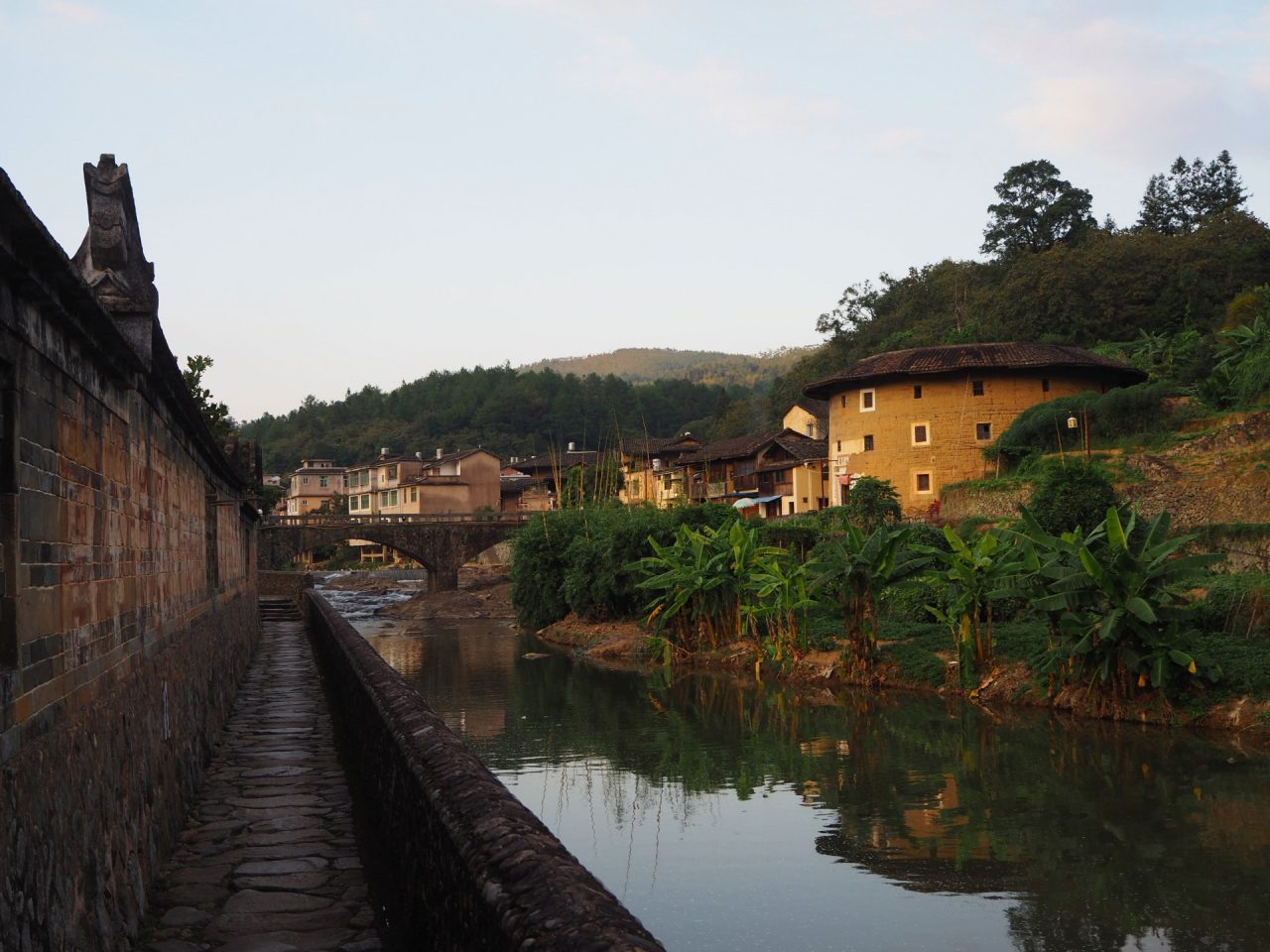
This does create somewhat of a dilemma for ESL teachers though. Since our holidays are the same, where should we go? The first and last days are almost impossible to travel anywhere on, cutting out time right away, and all of the popular places (and even those less so) will be crammed with even more tourists than usual. In an attempt to avoid this, we opted for a short trip only – to visit the tulou in southern Fujian, less than a day’s travel away. Giant earthern roundhouses they might be, but hopefully not too attractive a destination for everyone else. Hey, at least we went before Disney decided Mulan lived in a tulou.
Three hours on the train took us to the nearest city of Longyan, where Casey-Lee had remarkably organised things so well that both finding the bus station and booking the bus were a breeze. And after whiling away the time buying super sized fruit teas, we finally got on our ride.
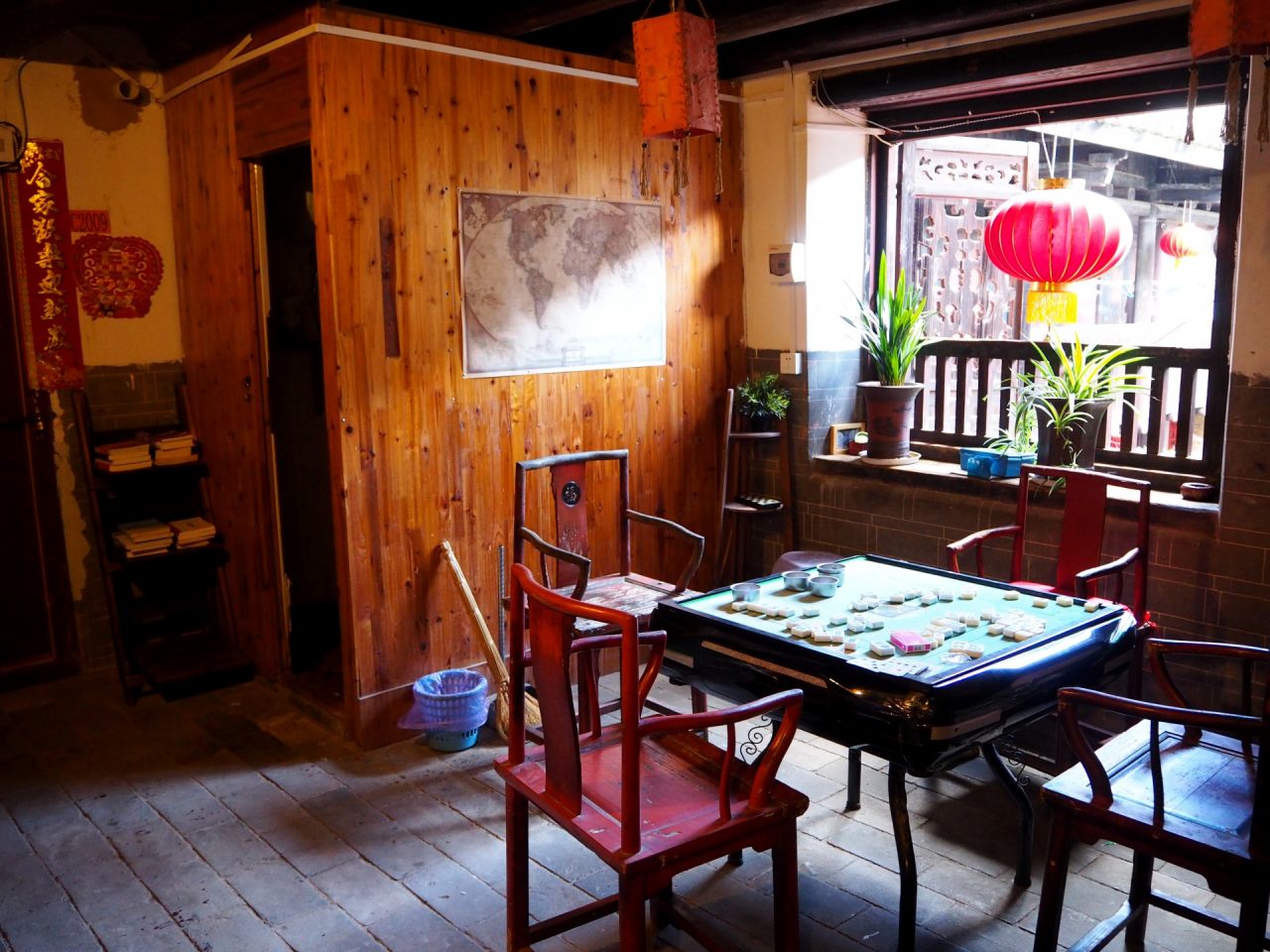
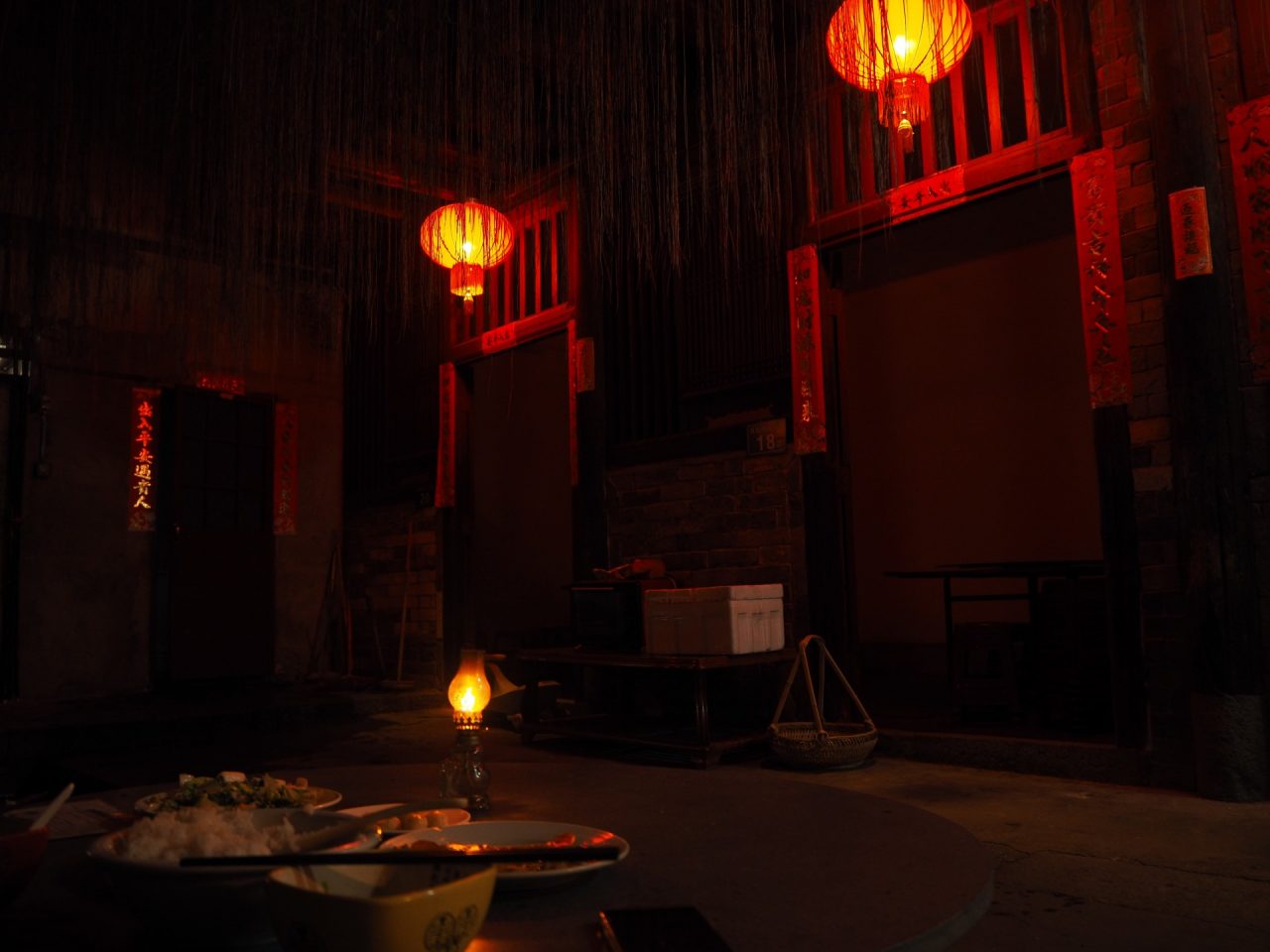
Since the road through the village is closed during the day, our host, Stephen, generously picked us up from the bus terminal and took us around the back of the village. Once again, Casey-Lee’s organisation had paid off as she’d managed to book us to stay in an actual tulou in the village itself. A massive palace of earth, which had been beautifully kept and restored, it was home to Stephen’s family in addition to the hotel business. The only downside was that our room had twin beds! Casey-Lee was unimpressed.
With the sun starting to set, we took the opportunity for a quick dart around the village, around the back of the river, and through the narrow alleys of the rest of the housing. Amongst them, a few smaller tulou, like mini cylindrical fortresses, serving as housing, communal area and protection for communities and families. One of the bigger ones even had a dedicated temple inside. These would serve as but a taster for what we’d see the next day.
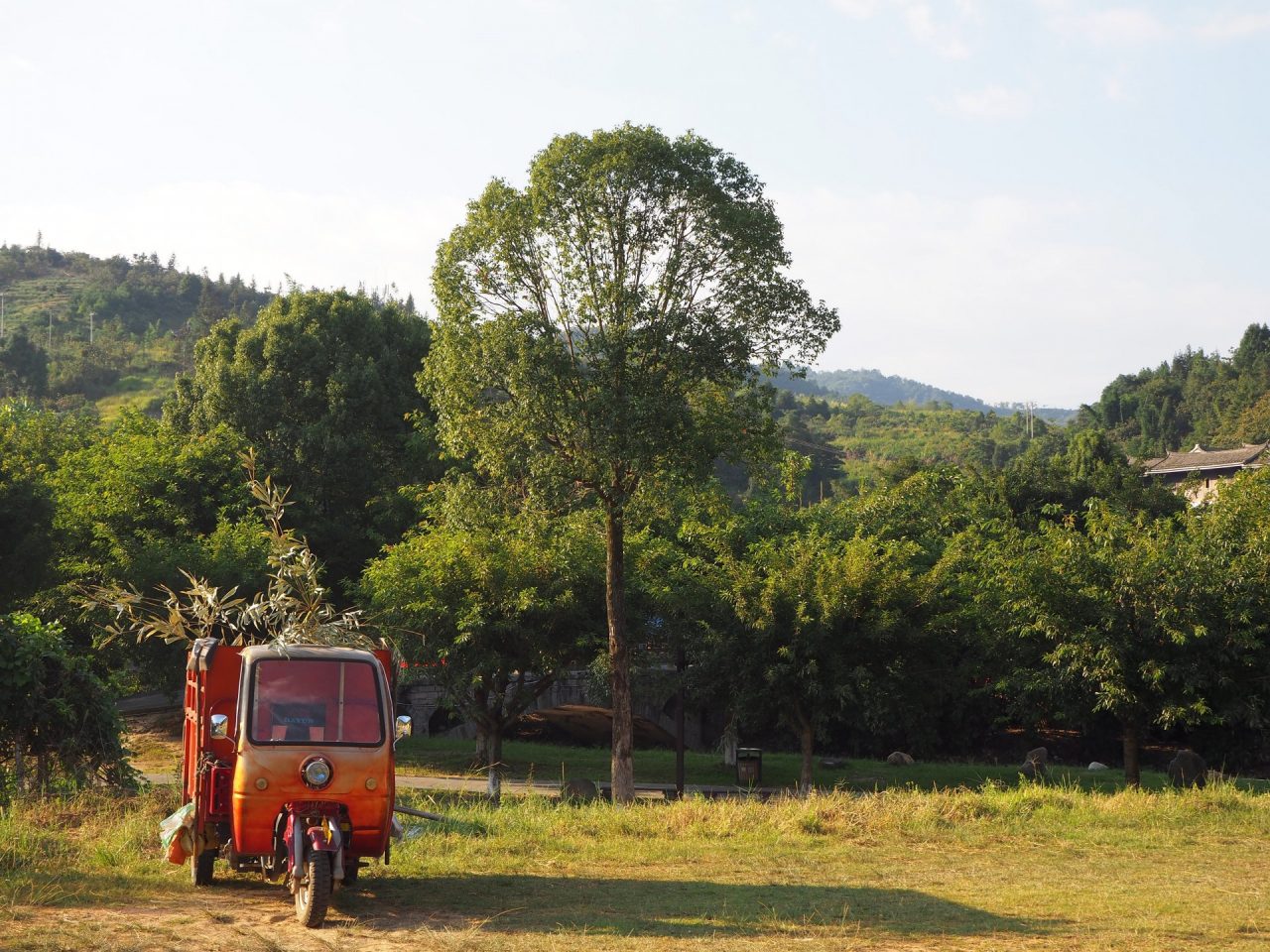
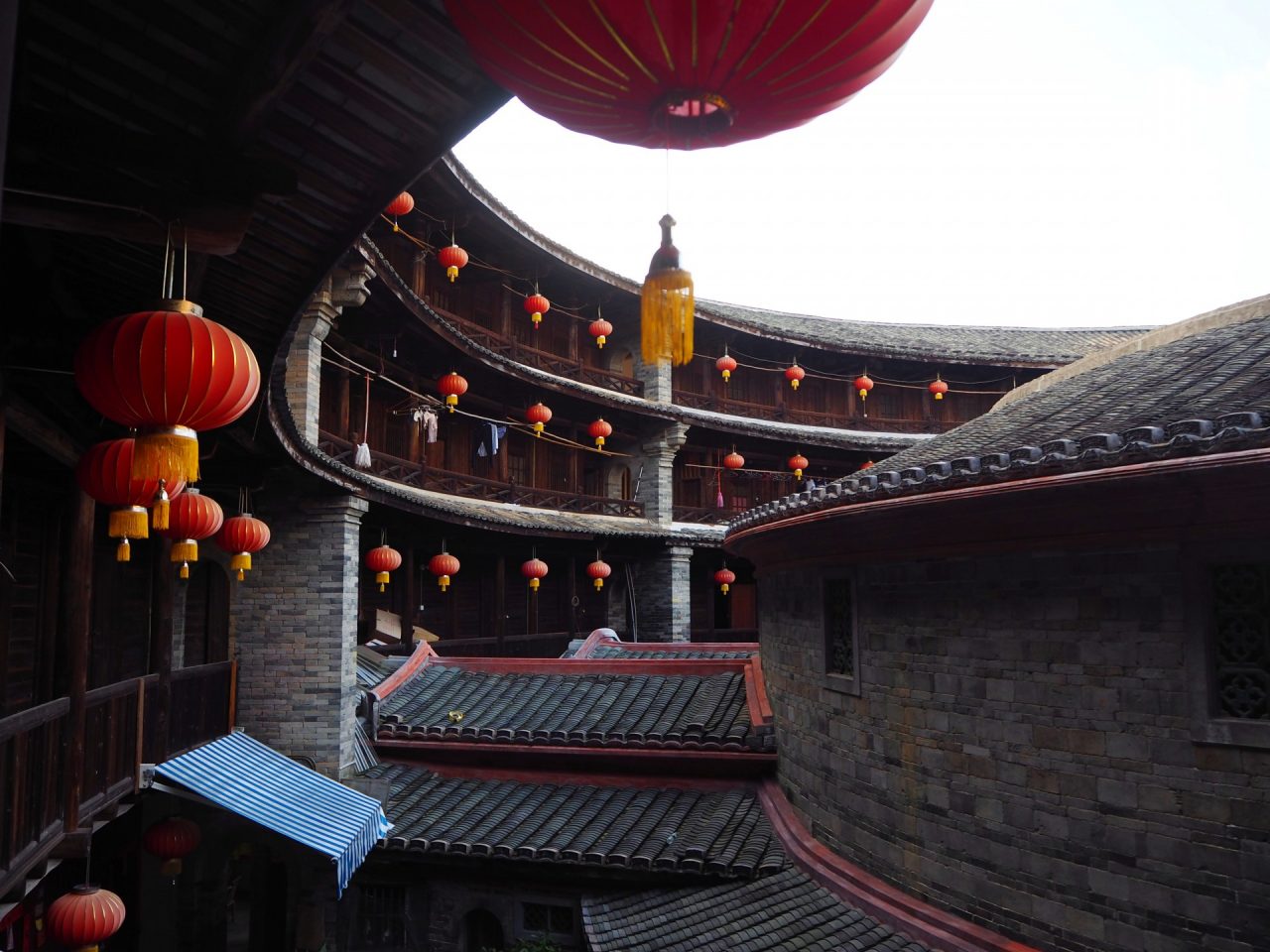
Come morning, we rented a motorcycle and a guide. They came together. If you’re fairly decent at maths, you’ll know that adds up to three people for one bike. It’s as cramped as it sounds.
Fortunately, the bike and our mostly monosyllabic driver were up to the challenge. The fact that it was as beautiful a day as we could have wished for didn’t harm matters, either. Winding through the hills, and past dozens of villages, we stopped to take a look at some of the more interesting and quirky tulou. One, Yuchanglou, was over 700 years old. At the time, the wooden pillars supporting the structure had been measured incorrectly, leaving each floor looking like it had buckled and leaning in the opposite direction to the one below it. After all this time though, people still lived there and called it their home.

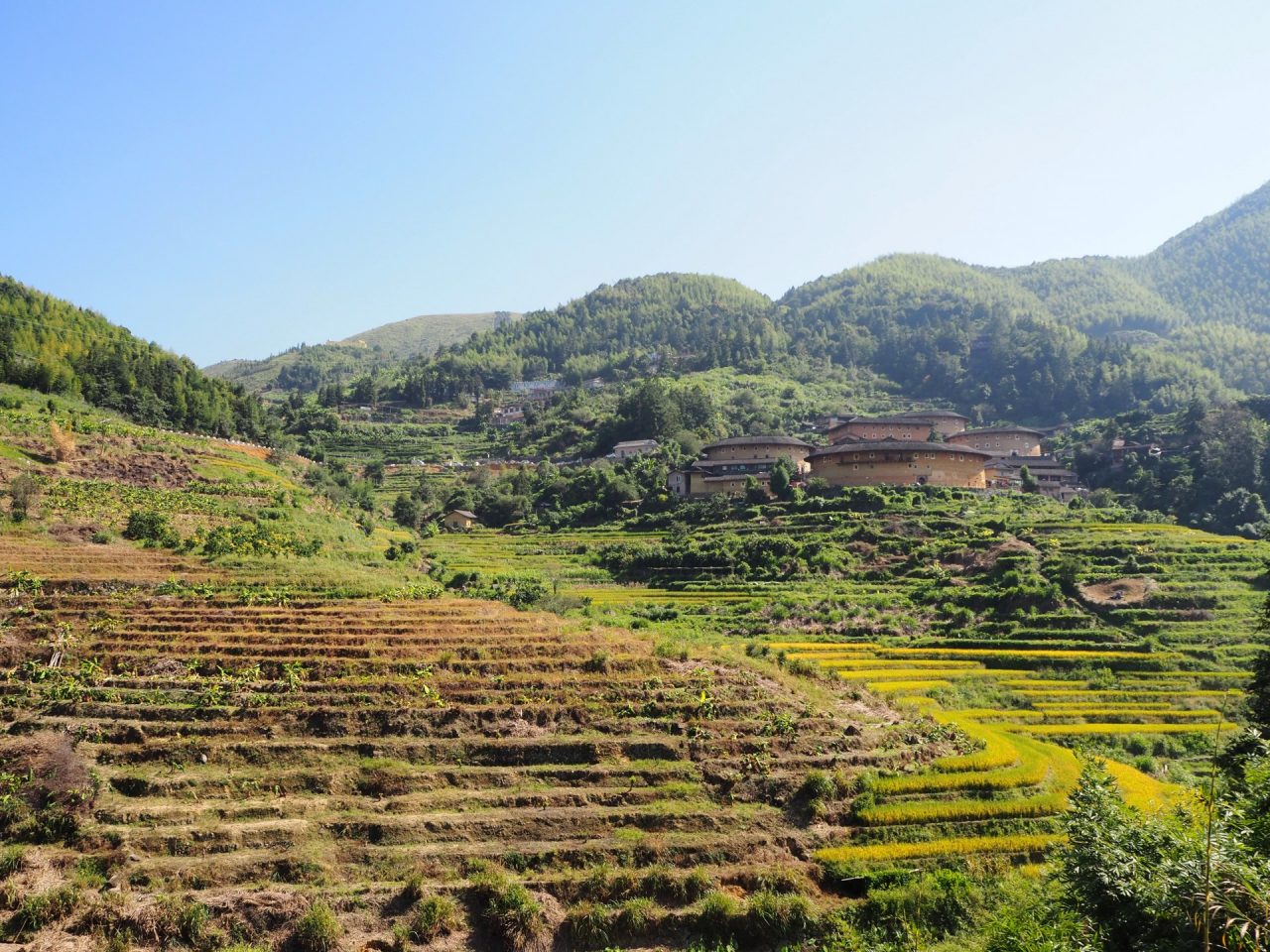
Further up in the mountains, Tianluokeng might be the highlight. A cluster of five tulou sat together, overlooking a whole valley of stepped rice terraces. Once, these would have been home to thousands of people, but with China’s great movement into the cities most of those who remain are from older generations.
Bucking the trend in one of the tulou was Tai, a painter who had called Tianluokeng his home since childhood. Not your stereotypical country kid, with flowing hair and flowery shirt, he’d nonetheless stayed and made a living selling his paintings to tourists. I bought one, obviously.
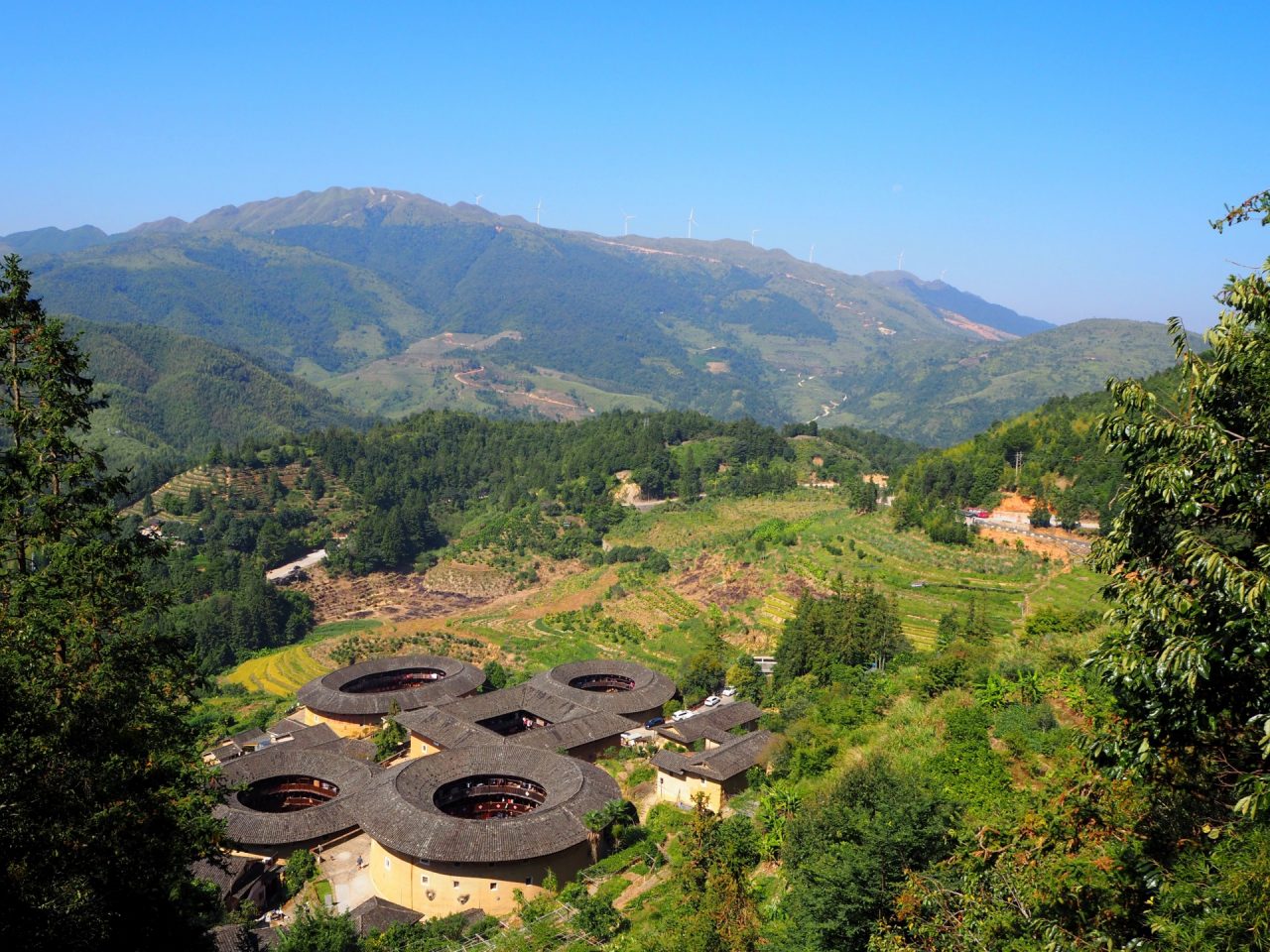
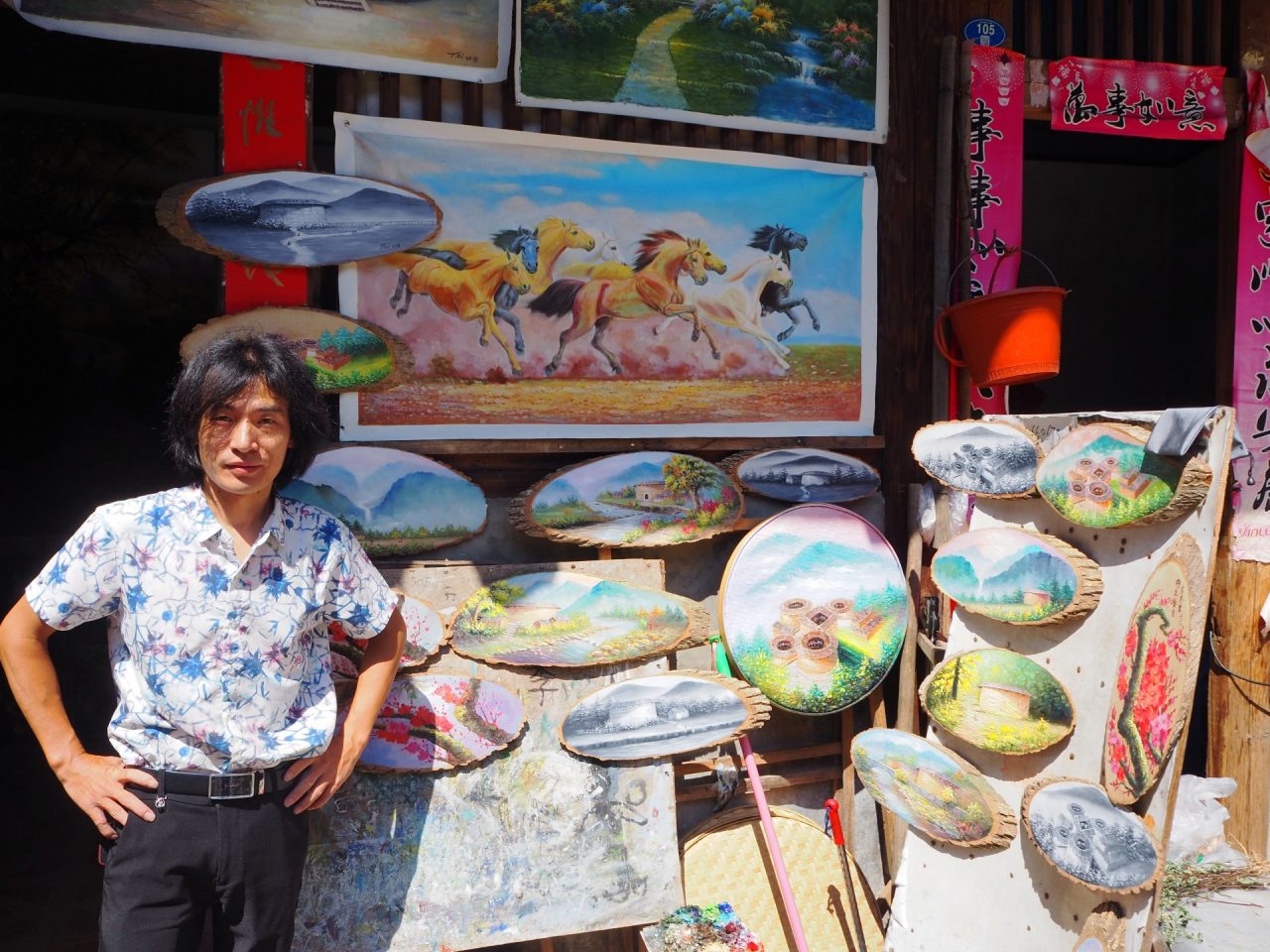
Aside from a quick diversion at a water town and a chance for Casey-Lee to admire some stone posts (apparently called steles), we had one more tulou left to see. The “king of tulou”. The biggest tulou in the area, it definitely lived up to the name, dominating the surroundings, and, well, being generally imposing.
Despite our success in avoiding the crowds up to this point though, our fortunes were about to turn. Inside, the rabbit warren like tunnels were occupied by hordes of National Week tourists, and after a day of exploring tulou, we were suddenly very tired. It was time to get out of there. Instead, we spent the evening out on regular bicycles in the countryside near our village. Away from the chaos and the noise. Just as planned.
